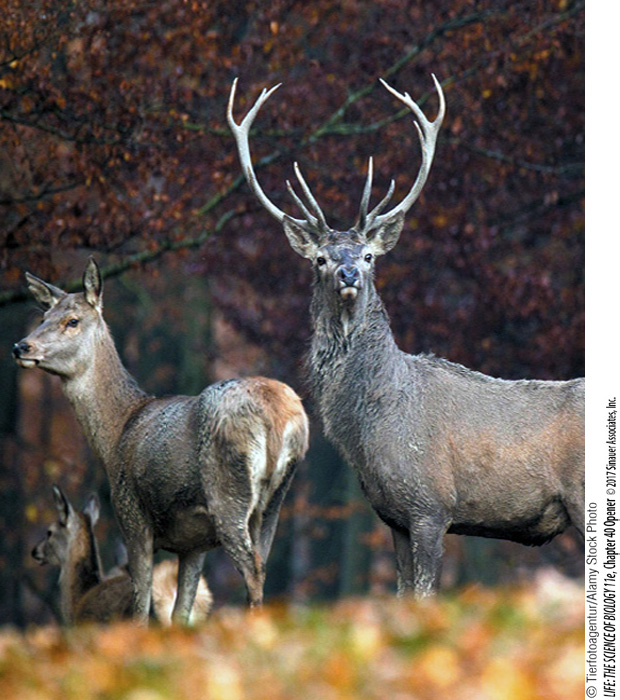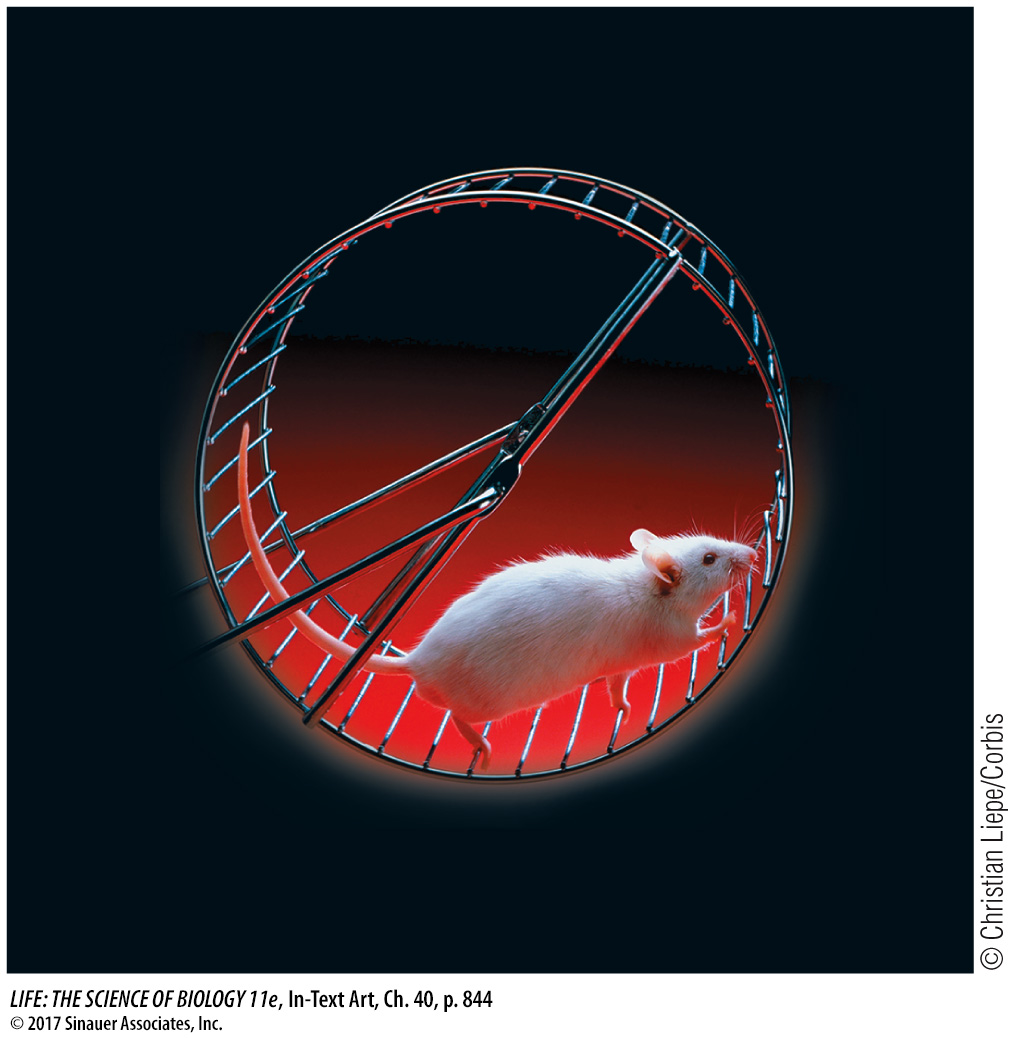Chapter Introduction
844
40
key concepts
40.1
Hormones Circulate Around the Body and Affect Target Cells
40.2
The Endocrine System and Nervous System Work Together
40.3
Hormones Play Important Roles in Development
40.4
Hormones Regulate Metabolism and the Internal Environment
Animal Hormones

investigating life
The Exercise Hormone
Some active people eat a lot and never put on weight. Do they stay thin simply because exercising burns excess calories that would be stored as fat? There are two kinds of fat. “White” fat stores lipids, and “brown” fat metabolizes lipids to produce heat without producing ATP. Brown fat is present in cold-
A recently discovered signaling molecule may explain the difference in individual propensities to put on weight. Because this molecule, which was named irisin, circulates in the blood, it was designated a hormone. Irisin was discovered in a strain of mice bred for increased exercise endurance capacity, and it was shown that the irisin molecule is produced in and released from active muscles.

Training causes numerous structural and metabolic changes in muscle. Training also improves many other aspects of health. How are these changes mediated? Analysis of fat tissue from the super athletic mice showed a remarkable finding: their white fat had properties of brown fat. Moreover, this “browning” of white fat was triggered by irisin. That is, active muscles in mice signal white fat to change its properties to become metabolically active, burn more calories, and produce more heat. So in addition to improving the condition of muscles, exercise also causes muscles to “talk” to white fat, telling it to “shape up.”
Lots of questions followed the discovery of irisin in mice. Is it produced in humans during exercise? Does it have effects on tissues other than fat? Might other benefits of exercise be attributed to it? More research is under way.
This chapter covers the remarkable roles that hormones play in regulating physiological systems. A hormone is a chemical message that circulates in the blood and activates distant target cells. The power of hormones to initiate physiological change is reflected in the name irisin. Iris was the messenger of the Greek gods, traveling the world with the speed of the wind.
In what ways could irisin mediate the health benefits of exercise?